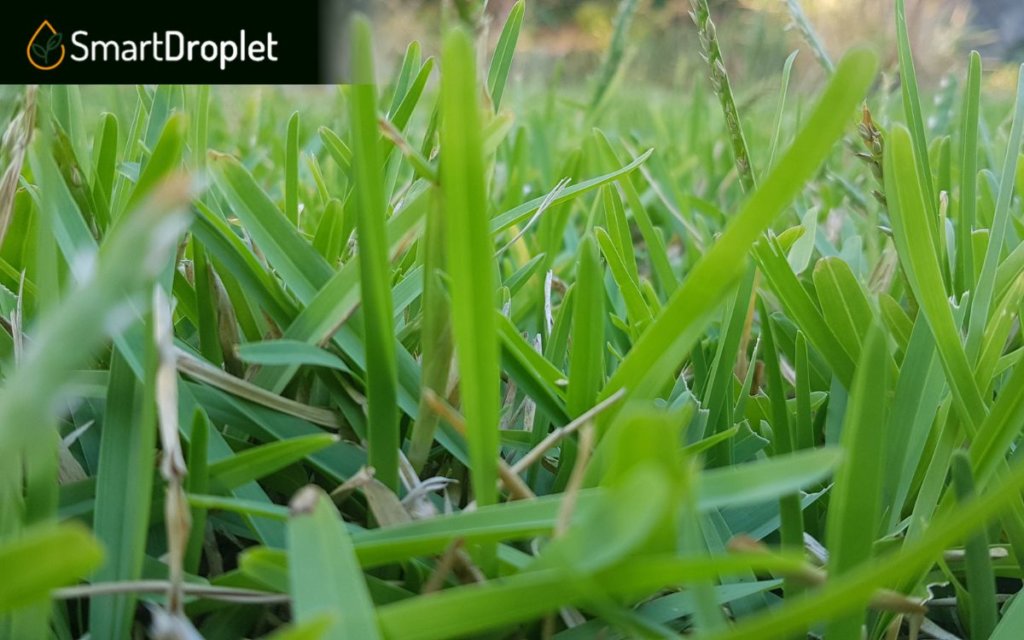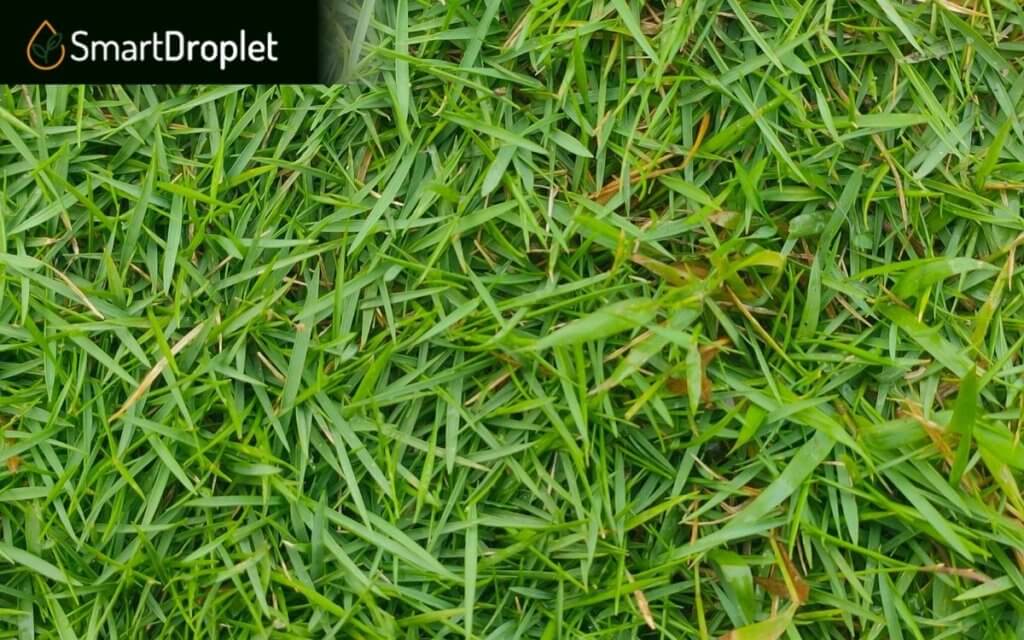As lawn owners, we experience a collective LOVE-HATE RELATIONSHIP with lawn care, especially during the mowing season.
Wouldn’t it be nice if you could do little or no mowing at all? Some grass blends save you a lot of time and energy because they don’t demand much care and they can still make your lawn look good.
The following types of grass do NOT need mowing:
- Buffalo grass
- Mondo grass
- Centipedegrass
- Seashore Paspalum
- No-Mow Zoysia
- Creeping Brentgrass
- Hard Fescue and Other Fescue Mixes
- +1 Artificial Grasses
Take a look at these grass types that are GOOD for a no-mow lawn:
Buffalo Grass

The buffalo grass or Buchloe dactyloides has a short, broadleaf form and a rough texture compared to the usual grass.
Another variety is the UC Verde, which has silky blades.
This grass type grows at a SLOW rate throughout the North American plains and can survive in USDA zones 5 to 10.
If watered OCCASIONALLY, its growth height can reach up to 4 inches. But if added with MORE water, the growth can reach up to 6 inches tall.
You can also plant this grass type via seeds, DENSE sod or plugs, and the best part is, they CAN tolerate environments.
Mondo Grass

Black Mondo Grass (Ophiopogon planiscapus ‘Nigrescens‘) and Kyoto Dwarf (Ophiopogon planiscapus ‘Nana’) are mow grass varieties that can live without having to be mowed.
The growth height of a Black Mondo Grass can only spurt up to more or less 6 inches, with a thick look and a purplish-black color.
The Kyoto Dwarf might be the BEST Mondo grass if you want shorter ones since it grows from only 3 to 4 inches tall.
The grass can endure the USDA zones 7 to 9 because it is DROUGHT TOLERANT and has a low growth rate.
Centipedegrass

Because of its SLOW growth rate, this reddish-colored, dense grass develops into a close-knit turf. As a result, it’s also known as “lazy man’s grass.”
It can grow to 4 to 6 inches tall if not cared for regularly due to its dense root system.
Another attribute of this grass is that it MAINTAINS its DEEP green color in mild climates with at least 6 hours of direct sunlight. Also, it is SUITABLE for low grassy areas.
Centipede grass is KNOWN for being resilient to drought and minimum maintenance. This lawn requires far less upkeep than any other in its growing region.
Furthermore, the perk of growing this type is it THRIVES in minimum maintenance areas.
Seashore Paspalum

This salt-tolerant grass can grow up to 20 inches tall and has a medium to the coarse blade. Also, it has a deep-rooted build and can withstand heavy traffic.
This grass thrives in a DENSE turf that doesn’t require mowing. It is most recognized for its ability to withstand salt.
Paspalum exceeds other grasses in terms of its ability to THRIVE and GROW in places with intense sea spray, sodic soils, and a lack of sufficient water irrigation.
No-Mow Zoysia

The No-Mow Zoysia (Zoysia tenuifolia) is another durable, warm grass that is drought resistant and requires very little watering, for about twice a year only.
This grass type is good for lawns due to its BRIGHT green color and FINE blades.
However, ordinary Zoysia may require mowing WEEKLY; the Zoysia tenufolia only requires MINIMAL watering with its slow growth.
Late spring to early summer is the PERFECT time to plant these on your lawn. It can also withstand HIGH foot traffic and thrives in FULL SUN.
Creeping Brentgrass

The Creeping Bentgrass (Agrostis stolonifera) is the northern variety, ideal for locations with hard frost, grows 3 to 6 inches tall, and is OKAY with partial shade.
With LESS maintenance and intensive plotting, Creeping Brentgrass is a good solution, if you still want to achieve the look of a traditional lawn that is drought resistant with good ground cover.
Hard Fescue and Other Fescue Mixes

Fine fescue is the MOST COMMON for the cool season and is perfect for a no-mow and low-mowing type of lawn that doesn’t require much effort.
Its hardiness and ability to ward off weeds are why fescues are good for minimum maintenance and dense turf areas. However, they CANNOT thrive in clay soils.
What’s more, you won’t have to use any HERBICIDE or FERTILIZER for seed heads. For lawn care, no grow mixes are also perfect.
Moderate amounts of seed mix can also cover 1000 sq ft.
The best no-mowing FESCUE selections are the following:
- hard or mixed fescues
- sheep fescue
- Chewings fescue
- Creeping red fescue
Putting on Artificial Grass for Lawns
A LOT is at stake for a lawn that goes through a natural growth cycle, with factors affecting its PRESENT and FUTURE conditions for low maintenance turf areas.
Another problem is the RAPID weed growth which can HINDER the propagation of grasses.
If you’re wondering why ARTIFICIAL TURF GRASS might be good, consider these:
- You don’t have to trim synthetic turf grass
- Less growth of weeds
- Free from dead foliage
Artificial turf is a GOOD CHOICE since it doesn’t get heavy foot traffic and won’t get affected by any poor soil type.
Frequently Asked Questions
You may take a look at these FAQs for your mow grass right here to achieve a low maintenance lawn:
What Areas Should I Use the Ground Cover For?
It would be best to look at the PREDICTED SPREAD of the plants before buying ground cover grasses. If it’s an area of about 100 square feet, you need around 50 other plants.



